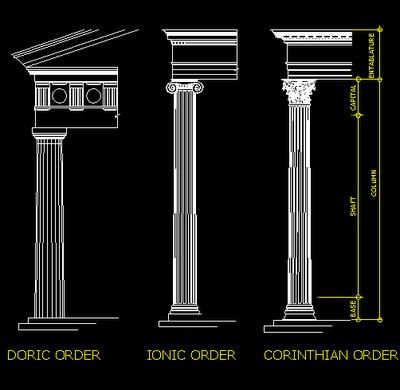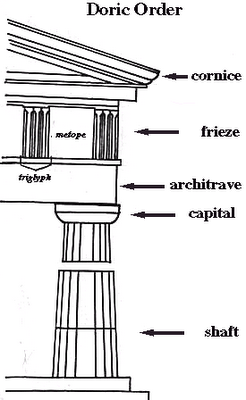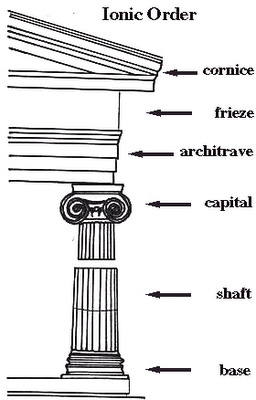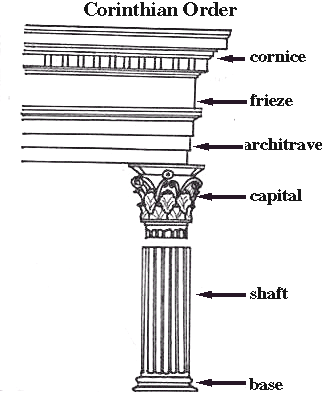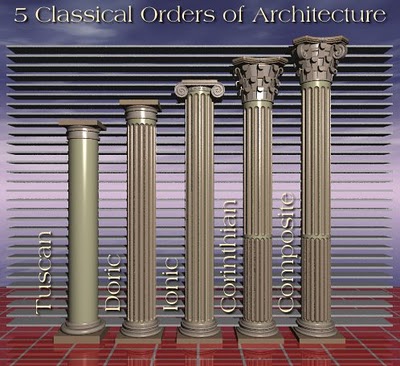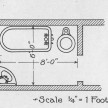Decorative Columns
Decorative Columns: Orders Of Architecture
The classical orders are ancient styles of building design distinguished by their proportions and their characteristic profiles and details, but most quickly recognizable by the type of “column” and “capital” used.
With decorative columns, there are five so-called classical orders, which are named Doric, Ionic, Corinthian, Tuscan, and Composite.
Each order has its own distinctive character, both as to relative proportions and as to the detail of its different parts.
Many of my customers and ask for decorative columns to be installed. Whether installed in a large room, entry way or on a porch, columns add classical style and aesthetic beauty to entrance ways.
I’ve discovered that many clients do not understand the classical order or column nomenclature.
Here’s a brief lesson on columns. I hope my architect friends will comment on what they see in the field and how the classical order influences their modern designs.
Doric:
Of the three columns found in Greece, Doric columns are the simplest. They have a capital (the top, or crown) made of a circle topped by a square. The shaft (the tall part of the column) is plain and has 20 sides. There is no base in the Doric order. The Doric order is very plain, but powerful-looking in its design.
The area above the column, called the frieze [pronounced “freeze”], had simple patterns.
Above the columns are the metopes and triglyphs. The metope [pronounced “met-o-pee”] is a plain, smooth stone section between triglyphs. Sometimes the metopes had statues of heroes or gods on them. The triglyphs are a pattern of 3 vertical lines between the metopes.
There are many examples of ancient Doric buildings. Perhaps the most famous one is the Parthenon in Athens, which is probably the most famous and most studied building on Earth. Architects today still borrow some parts of the Doric order.
Ionic:
Ionic shafts were taller than Doric ones. This makes the columns look slender. They also had flutes, which are lines carved into them from top to bottom. The shafts also had a special characteristic: entasis, which is a little bulge in the columns make the columns look straight, even at a distance.
The frieze is plain. The bases were large and looked like a set of stacked rings. Ionic capitals consist of a scrolls above the shaft. The Ionic style is more decorative than the Doric.
Corinthian:
The Corinthian order column has flutes and the base is like the Ionian. Unlike the Doric and Ionian cornices, which are at a slant, the Corinthian roofs are flat.
Tuscan:
The Tuscan order columns have a very plain design, a plain shaft, and a simple capital, base, and frieze. It is a simplified adaptation of the Doric order by the Romans.
The Tuscan order is characterized by a non-fluted, smooth column shaft and a capital that only consist of an echinus and an abacus.
Composite:
The Composite order is a mixed bag, it combines the volutes of the Ionic with the leaves of the Corinthian order



